Pre-Requisite Reading: What is electronegativity?
Carbon and Hydrogen do not have any significant electronegativity difference (< 0.5) and can form long chains of neutral hydrocarbon compounds like Butane, Pentane, Hexane, Heptane, Octane, etc.
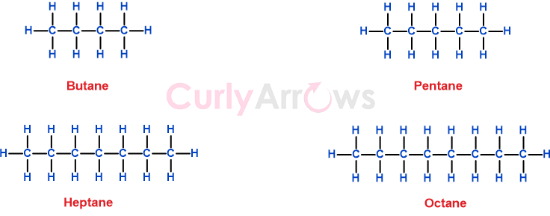
But suppose at one end of a carbon-carbon chain, there lies an atom or a group of atoms with the ability to pull the bond electrons towards itself or push the bond electrons from itself, and decreasingly transmit the effect to the adjacent carbons via the covalent bonds. In that case, such an effect is called an Inductive effect.
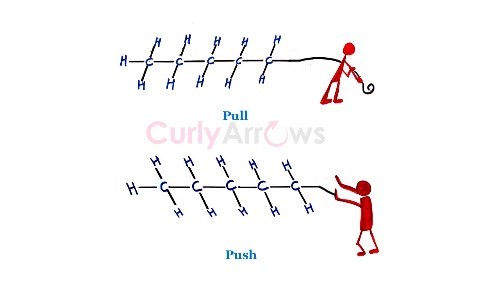
How the Inductive Effect Occurs
Higher electronegative heteroatoms (N, O, S, Halogens, etc.) in the hydrocarbon chain introduce polarity difference between the Carbon and the heteroatom. This polarization further induces polarization in the adjacent carbon atoms, and its effect weakens with the distance. The effect is negligible after the fourth carbon atom in a longer chain.
For example, the structure of n-butane (made of four Carbon atoms) is C4H3-C3H2-C2H2-C1H3, and if one of the terminal Hydrogen of C1 is replaced with an electron-withdrawing group, nitro (-NO2), the structure is C4H3-C3H2-C2H2-C1H2-NO2.
The replacement of H with more electronegative group nitro (-NO2) pulls the C-NO2 bond electrons towards NO2, creating a polarization of the C-NO2 bond. Since more significant electron density resides on NO2, it gets a partial negative charge (δ-), and Carbon, due to the loss in electron density, gets a partial positive charge (δ+).
C4H3-C3H2-C2H2- δ+C1H2- δ-NO2
The loss in the electron density of C1 causes it to pull the electron density from C2, so C2 is now electron deficient. This displacement of electrons of the C2-C1 bond towards C1 and polarization of C2 is shown with one more δ+ charge as δ+ δ+C2.
C4H3-C3H2- δ+ δ+C2H2- δ+C1H2- δ-NO2
Pulling the bond electrons from C2 makes it slightly electronegative and partially polarized, causing C2 to withdraw the electron density even slightly from C3. The C3 will, in turn, pull from C4, and the bond polarization is shown as,
δ+ δ+ δ+ δ+C4H3- δ+ δ+ δ+C3H2- δ+ δ+C2H2- δ+C1H2- δ-NO2
The effect of the induced polarity steadily weakens with the increasing distance from the substituent and becomes negligible after three-four Carbon atoms. In the above example, the impact is felt slightly or is insignificant for C4.
In short, the adjacent carbon atoms attained induced electronegativity due to the electronegative atom, and polarizations got relayed through the single covalent bonds until the effect diminished with the distance.
The Inductive effect depends on the electron- withdrawing/donating nature of the atoms present and is therefore inherent to the molecule. It is a permanent effect and does not require the presence of any reagent or chemical environment.
Types of Inductive Effect
The Inductive effect is of two types:
1) Electron pulling negative inductive (-I) effect: If the atom or the group of atoms pulls the bond electrons, then such an effect is called a negative Inductive effect, written as -I effect. For example, in CH3-CH2-CH2-Cl, electronegative Chlorine withdraws the electron density from the carbon-carbon bonds.
The ‘pull’ effect of an electron-withdrawing group (-I effect) is similar to the game of tug-of-war. The electron-withdrawing group tug on the bond electrons of the rope. The tugging is felt strongly by the nearby atoms and less by the faraway atoms until the central bond electrons move towards the electron- withdrawing group.
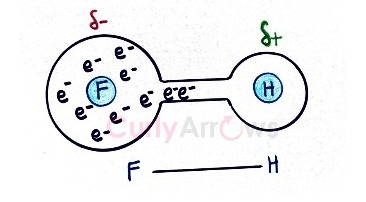
For example, in the above image, the Fluoro functional group pulls the two bond electrons of the H-F bond towards itself and therefore displays -I effect.
2) Electron pushing positive inductive (+I) effect: If the atom of the group of atoms pushes the bond electrons, then the effect is called a positive Inductive effect, written as +I effect.
For example, in toluene (CH3-C6H5), CH3 is less electronegative than Ar (according to the decreasing order of electronegativity, table below). Therefore, the methyl group (-CH3) pushes the electron density to the Phenyl (-C6H5) ring where Phenyl is acting as a -I group.
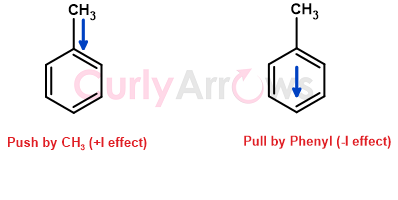
The push effect of an electron-donating group (+I effect) is like the release of energy seen in earthquakes where the surroundings near the epicentre has the most impact than the peripheral regions. The electron-donating groups push the electrons along the carbon chain, and its effect is weakest for the far-away carbon atoms.
Classification of Functional groups based on Inductive effect
All the groups of atoms are classified as electron-withdrawing (-I) or electron-donating (+I) relative to Hydrogen.
The most common +I and -I functional groups are:
+I group | -I group |
|---|---|
O- | OH, OR, OAr, Ar |
COO- | COOH, COOR |
CH3, CHR2, CH2R, CR3 | NO2, CN |
D | NH2, NH3+, NR3+ |
| F, Cl, Br, I, CF3 |
| SH, SR, SR2+, SO2R, SO2Ar |
| C_=CR, CH=CR2 |
| CHO, COR |
The -I effect of some of the atoms and groups in the decreasing order to Hydrogen is:
NH3+> -NO2> -CN> -SO3H> -CHO> -CO-> -COOH> -COCl> -CONH2> -F> -Cl> -Br> -I> -OH> -OR> -NH2> -C6H5> -CH3> -H
The +I effect of some of the alkyl group of atoms in the decreasing order to Hydrogen is:
-COO-> R3C- > R2CH-, RCH2-> CH3-> D-> H-
Representation of Inductive Effect (arrow)
The arrow on top of the bond indicates the direction of pull or the push of the bond electrons.
The arrowhead pointing towards the electron-withdrawing group indicates the pull towards it.
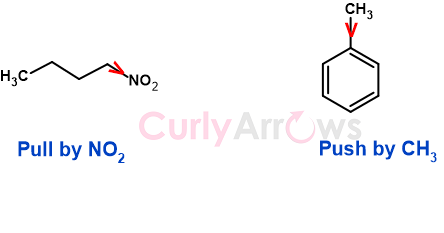
The arrowhead pointing away from the electron-donating group indicates the push of the bond electrons.
Related Reading: Is the Inductive effect the same as Electronegativity?
